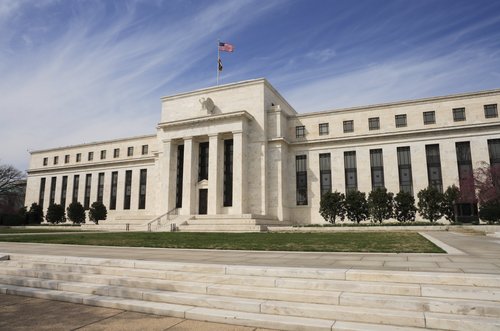The US Federal Reserve Bank (Fed), postponed an increase in its key policy rate again. Last year, the Fed had officially ended its low interest rate policy. But despite improved labor market data it has delayed further rate hikes. The central bank is far away from a "normal" policy rate, which would be 4 percent in the United States, - therefore the Fed might have to rely on negative policy rates like in Europe in the forthcoming economic downturn.

Normalization of monetary policy increasingly unlikely
While the European Central Bank (ECB) and the Bank of Japan have now lowered their policy rates into the negative range, the Fed signaled last year the intention to end its low interest rate policy. Last December the Fed then raised the policy rate actually the first time since July 2006 by 0.25 percentage points and announced two more rate hikes for this year. But further rate hikes were postponed instead. But this implies that much faster rate hikes are needed in order to achieve the so-called neutral level of the policy rate of 4 percent in the coming years. The Fed’s interest rate range is currently at 0.25 to 0.50 percent.
An appropriate level of its policy rate would provide the Fed with a buffer against hard times. But if they continue to raise interest rates so slow, it would be only in 2030 at 4 percent. Much too late: A typical business cycle - measured from a recession to the next – has a duration of 5.5 years in the US. Until 2030, at least two recessions could statistically occur which would make a renewed easing of monetary policy necessary - but this could only be achieved by negative interest rates then.
But for a normalization of monetary policy before the next anticipated recession, the Fed has to increase its key policy rate in the next three years by at least one percentage point per year. But there is currently no majority for such aggressive rate hikes.
The current opponents of a quick interest rate liftoff justify their votes based on the low inflation rate, low investment and the still weak economic growth: The most recent inflation rate was 1.2 percentage points below the Fed’s inflation target of 2 percent. Investment which had a pre-crisis level of 22 percent of gross domestic product, currently amounts only to 19 percent.
Against an overly pessimistic view stands the fact that the unemployment rate in the US is only at 4.9 percent. In the last recession, it had risen to 10 percent. And the debt levels of the traditionally strong indebted US households are now at a record low. Higher interest rates are not only manageable, but also necessary - especially in order to avoid a new debt cycle, which can easily occur when businesses, households and the government get used to low interest rates. And this concern is justified, as evidenced by the national debt ratio: During the high interest rate period until the end of the 1990ies the national debt ratio was never been higher than 50 percent of gross domestic product, while it has risen in the past seven years of historically lowest interest rates from 77 percent to 105 percent.
More on the topic

German Wage Policy between Inflation and Stagnation: Are Conflicts with the Aims of Monetary Policy Looming?
After the economic and financial crisis of 2008/9, the German labour market soon began to recover, creating scope for a comparatively expansive wage policy.
IW
A Macroeconomic Analysis of Wage-Price Spirals
The subject of this Analysis is the forms that wage-price spirals can take and how they influence macroeconomic stability and inflationary trends in Germany.
IW